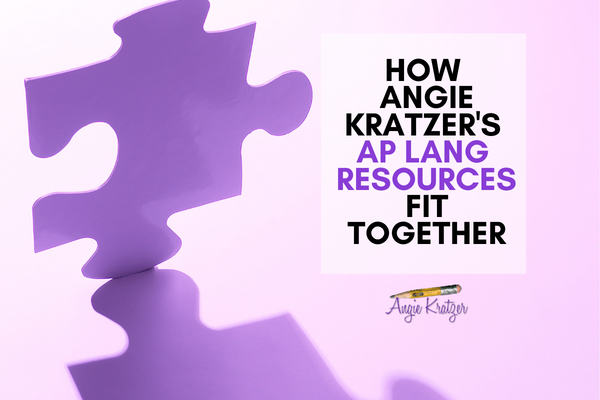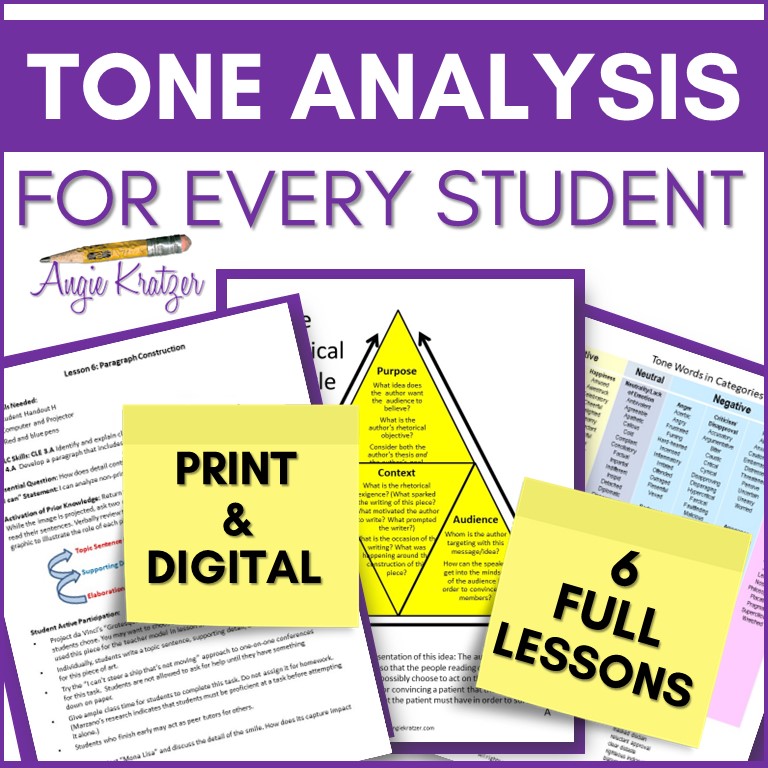
“This is overwhelming.”
“There’s so much here.”
“Where do I start?”
These three reviews of my mega AP English Language & Composition bundle made me pivot. The 53 resources make sense to ME, to MY classroom, to MY experience as a 22-year veteran teacher. In my mind, a teacher could take all the lessons, filter, pace, and order in a way that makes sense for her or his students. But what if that teacher has Lang for the first time, couldn’t make it to a summer institute, and is the only person within a 30 mile radius teaching the course? If that’s the case, that teacher is staring at a stack of 53 library books with blank covers.
Let’s put some jackets on those books. Here’s what my largest AP English Language & Composition bundle contains:
✿✿✿✿✿ Overview Resources ✿✿✿✿✿
180 Days of AP English Language: A Flexible Pacing Guide
90 Days of AP English Language: A Flexible Pacing Guide
I’m a linear thinker, and I chunk the course by the free-response questions. I have paced this system with two guides, one for a year-long schedule and one for block. The pacing guides include hyperlinked resources so that you know which unit fits where.
AP English Language Skills Alignment Chart
Before diving into the free response questions, get the big picture of the skills taught within each lesson plan. All skills (as listed in the current Course and Exam Description) are spelled out in the left vertical column, and the three writing units top columns of skills included in each lesson plan.
✿✿✿✿✿ Rhetorical Analysis Resources ✿✿✿✿✿
The foundation of rhetorical analysis is a tone vocabulary. This tone word study will equip students to craft meaty thesis statements. Included are ten weeks’ worth of quizzes and anchor posters.
Step-by-Step Rhetorical Analysis
5 Rhetorical Analysis Bell Ringers
Non-Fiction Rhetorical Analysis Bookmarks
You get a detailed lesson plan for introducing exigence along with a 27-lesson unit that thoroughly walks students through two methods of organization. Weave in the five bell ringers as students demonstrate proficiency and hand out the bookmarks for reference.
Rhetorical Analysis of Cotton Mather’s Essays to Do Good (excerpt)
Donald Trump’s Speech at Mount Rushmore: A Close Reading Activity
Harris vs. Trump: the Rhetoric of the First Debate
Analyzing Allusion in President Obama’s Second Inaugural Address
Rhetorical Analysis of Bishop Budde’s Inaugural Prayer Service Sermon
These five resources will give students scaffolded practice analyzing rhetoric.
Rhetorical Analysis Review Pages
Rhetorical Analysis Comprehensive Assessment
These two resources would work well at the end of the initial rhetorical analysis unit or as review before the May exam. The comprehensive assessment is editable, so you can make it your own, but it’s heavy on terminology. If you use it, do so with low stakes. Read more about my approach to rhetorical analysis.
The bundle includes three different ways to address rhetorical modes. Students need to learn both to analyze and to write in them. “7 Rhetorical Modes” offers handouts, suggested models, prompts, and rubrics. “Rhetorical Mode Project” guides students through the production of those elements. Within the thorough unit on The Things They Carried, the rhetorical modes are addressed as well. A teacher should do one of the three. Read more about teaching rhetorical modes.
Want to test drive some of these resources? Grab these six free lesson plans on teaching tone.
✿✿✿✿✿ Argumentation and Persuasion Resources✿✿✿✿✿
Line of Reasoning Lesson Plans (Applicable throughout the course)
✿✿✿✿✿ Synthesis ✿✿✿✿✿
✿✿✿✿✿ Multiple Choice Exam Resources ✿✿✿✿✿
✿✿✿✿✿ Supplemental Resources ✿✿✿✿✿
✿✿✿✿✿ Literature-Specific Resources ✿✿✿✿✿
✿✿✿✿✿ Exam Review ✿✿✿✿✿
✿✿✿✿✿✿✿✿✿✿✿✿✿✿✿✿✿✿✿✿


